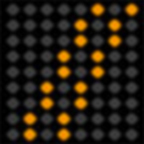|
Issue with World Space Tween Calculation
|


|
5
|
43
|
December 23, 2025
|
|
Mid level Pipeline TD - Atlantis Animation, Tenerife (Canary Islands)
|

|
0
|
106
|
December 11, 2025
|
|
Maya - match rotation of a single axis despite rotate order
|




|
6
|
79
|
December 10, 2025
|
|
Maya Autosave callback
|


|
2
|
91
|
December 9, 2025
|
|
LabelMatic Annotation Tool for Maya
|

|
0
|
51
|
December 8, 2025
|
|
Derive default maya shelves
|


|
1
|
64
|
December 1, 2025
|
|
Drag and Drop script - Paste the script contents into the correct tab in Script Editor
|



|
6
|
96
|
December 1, 2025
|
|
I can't build plugin for maya 2026
|


|
2
|
91
|
November 26, 2025
|
|
Skydome Light Issue
|


|
2
|
74
|
November 25, 2025
|
|
GPU Override "Node In Cycle"
|



|
4
|
104
|
November 19, 2025
|
|
TA and Senior TA positions open at DISBELIEF - Nov 2025
|

|
0
|
192
|
November 18, 2025
|
|
PyMEL 1.3.0, 1.3.1 and 1.4.0b1, 1.4.0 with support Maya 2024
|





|
16
|
5179
|
November 12, 2025
|
|
Maya xView Equivalent
|

|
2
|
185
|
November 12, 2025
|
|
Note about addWorldMatrixModifiedCallback behavior in Maya
|

|
0
|
68
|
November 10, 2025
|
|
Sharing a weight tool
|

|
0
|
130
|
November 4, 2025
|
|
TechArtist in 2025 :eyes:
|



|
4
|
540
|
November 15, 2025
|
|
Precomputation in a custom Node/Deformer
|




|
5
|
191
|
November 3, 2025
|
|
Relation Constraint's FCurve Box - Setting up Curve programmatically
|


|
1
|
67
|
November 3, 2025
|
|
Draw call optimization in UE5
|



|
4
|
344
|
November 1, 2025
|
|
Full-time Tech Artist at Barrow Neurological Institute
|

|
0
|
209
|
October 27, 2025
|
|
Why Does Freeze Transforms Work Differently on Cameras vs. Geometry in Maya?
|


|
2
|
111
|
October 24, 2025
|
|
Maya Python HIK - Switch Source to None
|





|
5
|
3796
|
October 22, 2025
|
|
Looking for help writing an OpenUSD plugin to fix OpenUSD Plugins
|

|
0
|
125
|
October 21, 2025
|
|
Maya MPxNode attribute value changes after plugin reload - How to persist custom attribute values?
|


|
3
|
65
|
October 21, 2025
|
|
Database dev for indie film
|

|
0
|
98
|
October 19, 2025
|
|
Multiprocessing in Mayapy
|


|
2
|
119
|
October 16, 2025
|
|
Maya subprocess.Popen doesn't launch batch script
|



|
2
|
61
|
October 15, 2025
|
|
UUID management (Maya)
|




|
4
|
1674
|
October 14, 2025
|
|
New Grad looking for advise
|


|
1
|
106
|
November 13, 2025
|
|
Maintaining Maya PySide2/PySide6 Compatibility
|




|
4
|
290
|
October 14, 2025
|